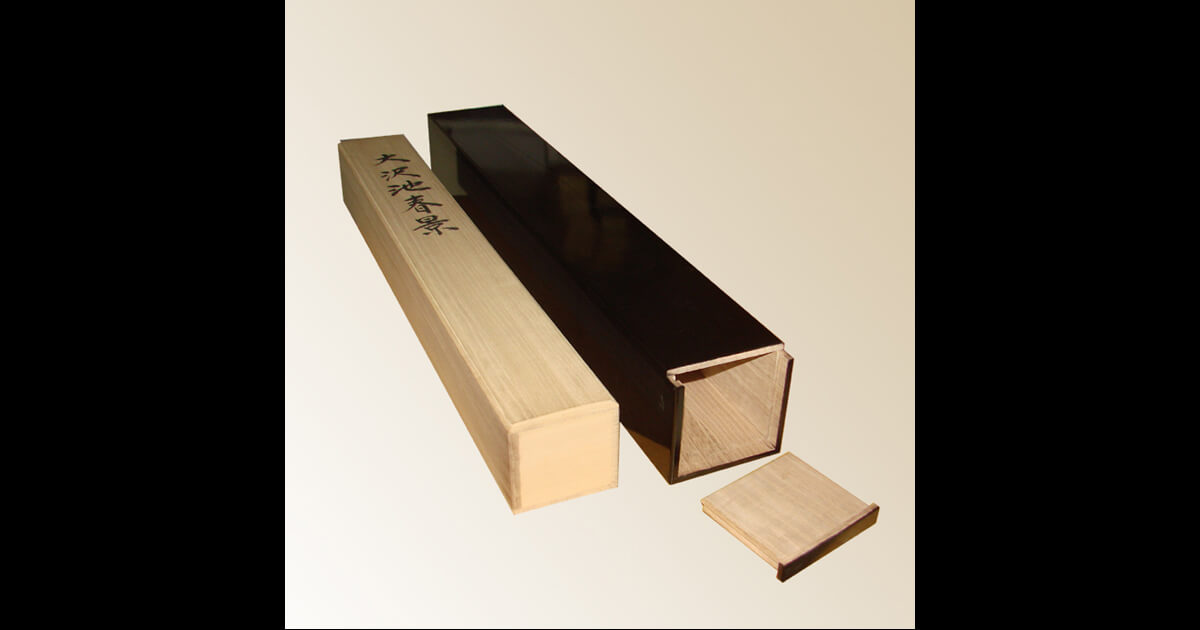Cause of Creases and Countermeasures
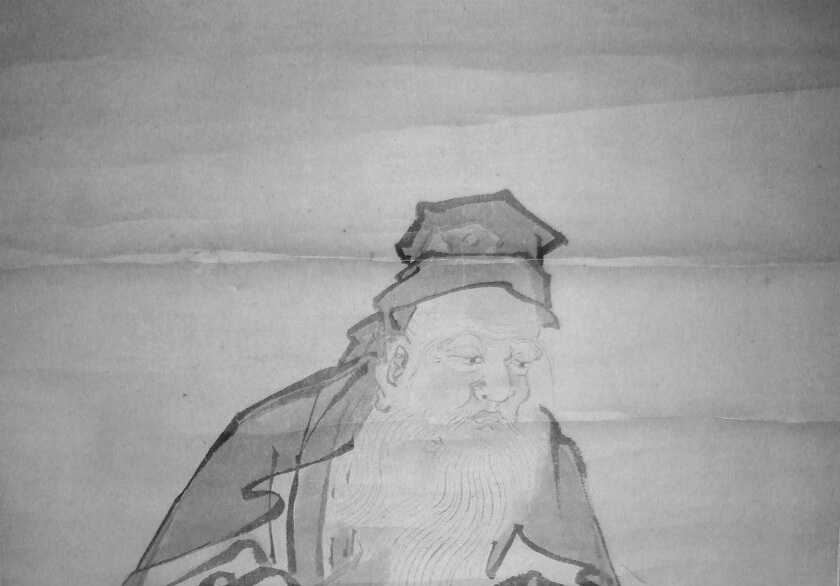
Hanging scrolls gets creases easily due to its complex structures made of silk, paste and multiple layers of Japanese paper.
Creases and cracks can be a result of interrelated issues such as construction, wear and materials.
The crease is troublesome not only because it disfigures hanging scrolls but also leads to the deterioration if the crease is severe. Our clients often ask us for repairing the crease so let us see why the crease occurs and how we handle it.
Contents
The Cause of Creases and Countermeasures
Due to Materials
1. Use of Inappropriate Materials for Main Art Work
Art work itself is stiff when made of inappropriate materials such as thick paper. For example, you will find a thick and strong cartridge paper will have lots of creases when rolled up in a small diameter. A thin and supple material is highly recommended for scroll making. Please refer to the following web link for more info :
2. Use of thick (or strong) Paste for Mounting
The use of too strong paste or thickly applied paste become stiff over time and causing paper/silk fibers to lose their flexibility and break. This also causes water stains and changes in surface texture of hanging scrolls. Moreover, it will make extremely difficult to remove an old backing paper for future remounting, resulting in a damage of the art work.
Due to Handling and Storage Practices
Simply, the hanging scroll is rolled around a rod and tied with a cord when stored. The repeated rolling and unrolling of the hanging scroll will inevitably cause creasing. They are also susceptible to damage as a result of environmental factors, both on display and in storage.
1.On Display
Do not keep a hanging scroll displayed for more than 3 months. Prolonged exposure to open air, humidity and light causes hanging scrolls to become unstable. Also, a scroll loses flexibility by maintaining the stretched position for a long period of time. If you try to roll up a scroll tightly in this state, it easily gets the creases.
2. In Storage
Although a box made of pawlounia wood is the ideal container for storing scrolls, scrolls should not be kept in the box for more than a year. If the scrolls are kept rolled for a long time, they remain in a tense state and the fibers of the paper may break when it is opened, causing creases and cracks. Thus, unpack your scroll and air it out at least once a year. It is also good for preventing mold and moth holes.
As the Japanese proverb says, “Do not leave your hanging scroll hanged in an alcove all year round”, “Conversely, do not keep it in the box for a long time. ”
Our ancestor has learned lessons through their experiences. A tradition of changing hanging scrolls at frequent intervals (once every 2 to 3 months for each season) is not only for joy but also for the protection. Just a reminder, please make sure to roll up and store your scroll on a fine, dry day in order to keep out moisture as possible as you can.
Due to Other Factors
1. Sunlight (or light)
Light exposure, direct or indirect can cause the materials and silk to fade and paper to darken. Lignin that is contained in pulp (ingredient for making paper) is subject to oxidation. When they pick up extra oxygen (or ultraviolet light), chemical reactions occur and change the colors to yellow and brown. Stronger and longer exposure to light accelerates aging and make paper brittle, finally resulting in the crease.
Thus, keep your hanging scroll out of direct sunlight and reduce artificial lighting as much as possible or try to display scrolls under low light.
2. Tying up too tightly
The creases may also occur as a result of squeezing the scroll or tying the cord too tightly. Leave a bit of margin for flexibility when rolling up.
3. Inadequate Support while Handling
Surface dents and creases occur when there is inadequate support while handling. Avoid touching the surface of a hanging scroll with the hands. Always take both ends of the bottom roller rod in order to prevent accidental abrasions or other physical damage. This also prevents dirt and sweat transfer to paper and silk. Direct contact with hands should be kept minimum.
Consult a Conservator
If the crease becomes severe, the main work itself may be at a risk of break or flaking and a new mount may be recommended. Please consult qualified conservators who are experts in scroll mounting.
Most of creases will be mended by wetting the main work and reinforce it with new backing paper. However, this does not apply when the crease is too severe.
For big creases, narrow strips of Japanese paper are applied to reinforce the creases. (We call it ore-buse, ore-dome, ori-ate or suji-kai)
In a case the crease can not be mended, scrolls can benefit from a futomaki. (a special insert rod which can support a scroll when rolling up. )
By making the diameter of the roller rod bigger, creasing and other forms of tension on the main work can be eased and prevented.
For more info about futomaki, please see below :
Restoration of a Scroll with Deep Creases
Let us explain with an example.
Before Restoration
This is a picture of “God of Longevity” with many deep creases.

If you leave this picture unattended, it will end up in the break or flaking.

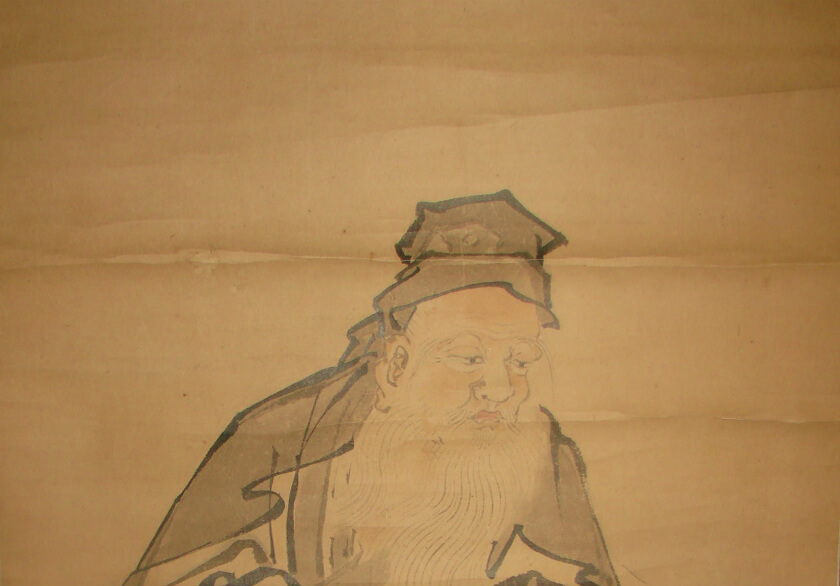
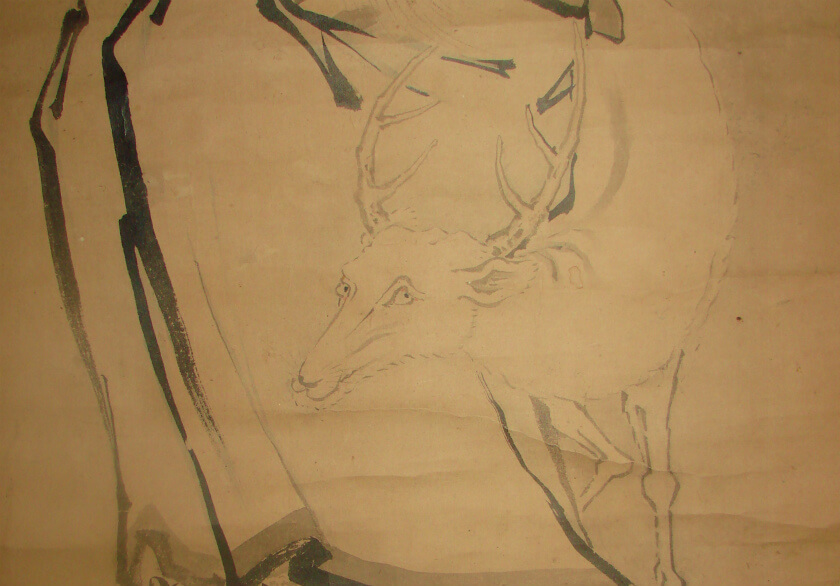
You can have a clear view of the creases from the side of the picture.
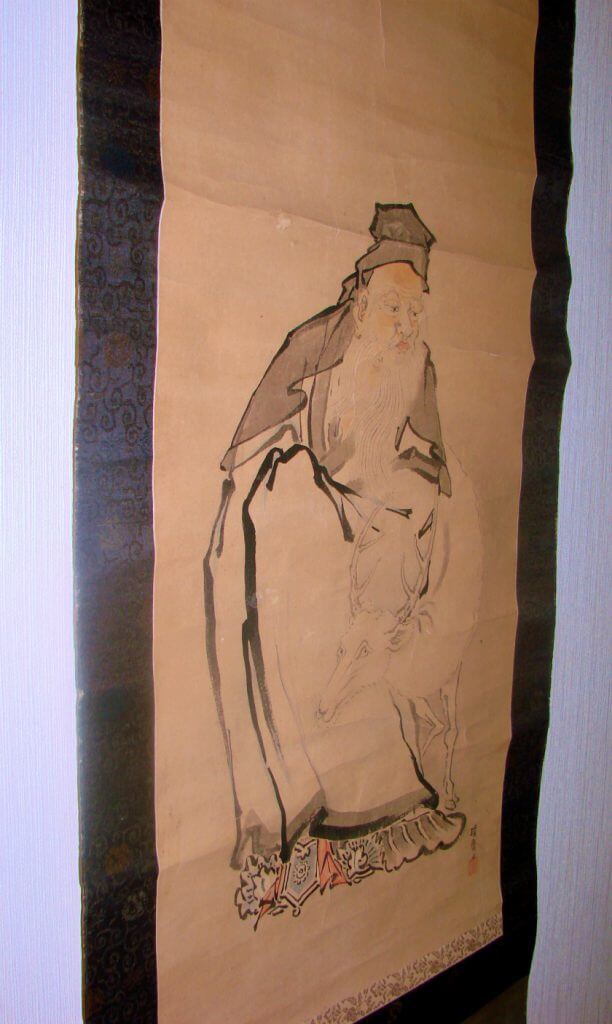
After Restoration
The creases were mended by remounting.
Now we can clearly see the faces of a deer and the God thanks to the smooth surface.
Let us see the picture from the side once again.
The picture restored to its former glory, compared to the one before restoration.
Lastly
That brings us to the end of today’s topic.
Hanging scrolls are delicate work of arts that require utmost care when handling, viewing and storing. However, it is worth taking care since they can last for a century if treated properly. We hope your precious hanging scrolls will be enjoyed for a lifetime.
If you have any questions regarding the creases or the restoration of hanging scrolls, please feel free to contact us.


